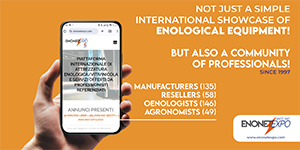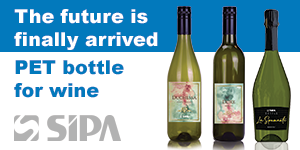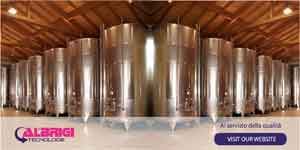Italian Wine Sector and Opportunities for Young Farmers (Update – August 2025)
- Overview of the Italian Wine Sector
In 2024, global wine production amounted to 226 million hectoliters, down 4.8% compared to 2023. Italy proved to be a bright exception: production increased by 15.1%, confirming the country as the world’s leading producer. Domestic consumption remained stable (around 37.8 liters per capita), while the rest of the world recorded a 3.3% decline. Internationally, Italy ranked first in exports by volume (21.7 million hectoliters) and second by value (€8.1 billion), behind France. Sparkling wine exports stood out (+9.1% in 2024).
Prospects for 2025 remain positive: leading Italian producers expect overall sales to grow by +1.7% and exports by +2%, with particular optimism for sparkling wines. There is, however, more caution for still wines (+0.9%). Veneto continues to lead in both production volume and exports (over 35% of Italian exports), followed by Apulia (16.1% of volume), and Piedmont and Tuscany, which account for only 4–5% of production volume but double the value thanks to premium wines. Sales in Friuli and Abruzzo grew by 8.2% and 7.5% respectively in 2024.
The business structure remains strongly family-oriented: 65% of companies’ net assets are held by families, a share that rises to 81.5% when cooperatives are included. The main concerns for operators are the expected decline in consumption (70% of companies), the reshaping of demand influenced by health-conscious trends, possible U.S. tariffs, and climate change.
For those wishing to start a new wine business, these figures show a sector that is stable and still growing in international markets, but which requires innovation, risk management, and strategic vision.
- Incentives for the Establishment of Young Farmers
The new Common Agricultural Policy (CAP) 2023–2027 includes intervention SRE01 “Establishment of Young Farmers” to encourage generational renewal. The scheme, active in several regions, provides a non-repayable grant for those becoming owners or legal representatives of a farm.
Lombardy
- Budget: €20 million.
- Applications: January 17, 2025 – January 15, 2026.
- Beneficiaries: young farmers (aged 18–40) taking over as owners of an individual farm or as legal representatives of partnerships, corporations, or cooperatives. At least 50% of the farm’s land must be located in Lombardy.
- Grant amount: one-off contribution in two installments: €50,000 in disadvantaged mountain areas and €40,000 elsewhere. Beneficiaries must prove that at least 50% of the grant will be invested in business expansion, land or building purchases, renovations, machinery, or services.
- Requirements: over 18 but under 41; professional skills; not established for more than 24 months; commitment to directly manage the business for at least five years; establishment cannot result from family subdivision.
Emilia-Romagna
The 2025 regional scheme includes two complementary measures:
- SRE01 – First Establishment: encourages entry into farming with a €60,000 grant for areas with natural constraints and €50,000 for other areas. The grant is non-repayable and may be complemented by specific investments.
- SRD01 – Productive Investments: supports the purchase of machinery, renovations, and modernization, covering 50% of eligible costs (minimum €10,000/€20,000; maximum €750,000). Requires submission of a Business Development Plan (BDP) detailing market analysis, commercial strategy, investments, and training.
- Eligibility: young farmers up to 40 years old, with professional skills, registered with INPS agricultural management, and owners or managers of companies.
Other Regions
The SRE01 scheme is available in several Italian regions with similar amounts (€50,000–60,000). For instance, the Autonomous Province of Bolzano (South Tyrol) and Lazio offer comparable grants, while Veneto’s program provides higher aid rates for young farmers.
- Calls for Investments in Wineries and Modernization
In addition to establishment grants, wine entrepreneurs can access specific programs for winery modernization and competitiveness.
Wine CMO – Investments (Lombardy and Veneto)
The National Strategic Plan includes biennial calls under the “Investments” measure. For example, in 2025 Lombardy launched a €7.3 million scheme funding the purchase of:
- Barrels and barriques for DOC/DOCG wine aging;
- Equipment for processing and marketing, including plant components;
- Laboratory instruments for analysis and quality control;
- Retail outlet setups and IT tools for business and e-commerce management.
Aid intensity for farms is 40% of eligible expenses, with a maximum of €200,000 and a minimum of €15,000. For processing and marketing companies, rates vary from 30% to 10% depending on size, with eligible expenses up to €700,000. Applications for the 2026/2027 period had to be submitted by May 31, 2025.
Wine CMO – Investments (Emilia-Romagna)
The 2025/2026 call funds construction or renovation of buildings, purchase of machinery, furnishings for retail points, e-commerce sites, and dedicated software. Aid intensity: 40% for micro, small, and medium enterprises; 20% for intermediate; 19% for large companies. Applications require registration in the AGREA IT system and submission of building permits by November 14, 2025.
- Support for Wine Tourism and Diversification
Wine tourism is a strategic development channel for wineries, adding value, fostering consumer loyalty, and diversifying revenues. Regional calls support this type of tourism.
Lazio – Promotion of Wine and Olive Oil Tourism
In February 2025 Lazio launched a €400,000 call, split equally between wine and olive oil tourism. The grant is non-repayable and covers up to 80% of eligible expenses, with maximums of:
- €15,000 for farms with more than 10 hectares or wineries producing over 15,000 liters of wine;
- €10,000 for smaller farms;
- €15,000 for protection consortia.
Eligible projects include market analysis, marketing, territorial promotion (guided tours, tastings), digital promotion (SEO/SEM, e-commerce, social media), staff training, and experiential tourism. Applications had to be submitted via PEC by March 7, 2025.
Trentino – Farm Diversification (SRD03)
The Autonomous Province of Trento funds agritourism and wine tourism through intervention SRD03. In 2025, €3.87 million of public expenditure was allocated. Grants are capital-based and fall under the de minimis regime (max €300,000 in three years). Aid intensity:
- 30% for purchase of movable goods and software;
- 40% for real estate and plant investments; for young farmers, rates rise to 40% (movables) and 50% (immovables);
- Eligible expenses range from €30,000 to €500,000, reduced to €100,000 if the entrepreneur is over 65.
Eligible operations include investments in agritourism/wine tourism, social farming, and processing facilities not included in Annex I of the TFEU. Equipment for tastings already covered by the Wine CMO is excluded.
- Practical Advice for Young Wine Entrepreneurs
For those dreaming of starting their own winery or wine tourism venture, opportunities abound. Here are some recommendations based on over forty years of experience in the sector:
- Develop a concrete business plan. A well-structured Business Development Plan is essential for accessing SRE01 and SRD01 schemes. It should describe the market, commercial strategy, production cycle, planned investments, and required skills.
- Evaluate location carefully. Establishment grants are higher in mountain or constrained areas (up to €60,000). Choosing suited but less saturated territories may provide competitive advantages and greater public aid.
- Invest in sustainability and digitalization. Calls reward projects enhancing environmental sustainability and advanced technologies. Eligible costs include winery management software or setting up e-commerce platforms.
- Integrate production and hospitality. Wine tourism is expanding, highlighting local history and identity. With regional grants (e.g., Lazio or SRD03 in Trentino), it is possible to create guided tours, events, and experiential routes.
- Work with professionals. Success depends on technical expertise (agronomists, oenologists), legal and fiscal skills, and modern technologies. Coordinating these professionals like a director ensures efficiency and maximizes funding opportunities.
- Plan for growth. Wine CMO “Investments” allow wineries to modernize, purchase machinery, and set up retail outlets. It is advisable to phase investments, using establishment grants first and then expansion funding.
Conclusion
In 2025, the Italian wine sector presents both strengths and challenges: on one side, increasing production, solid exports, and leadership in sparkling wines; on the other, the need for innovation and to address declining domestic consumption. Young entrepreneurs entering this world can count on a wide range of financial tools: establishment grants, winery investment programs, wine tourism funding, and diversification schemes. With strategic vision, careful planning, and the support of experienced partners, it is possible to turn a passion for wine into a sustainable and successful business project.





